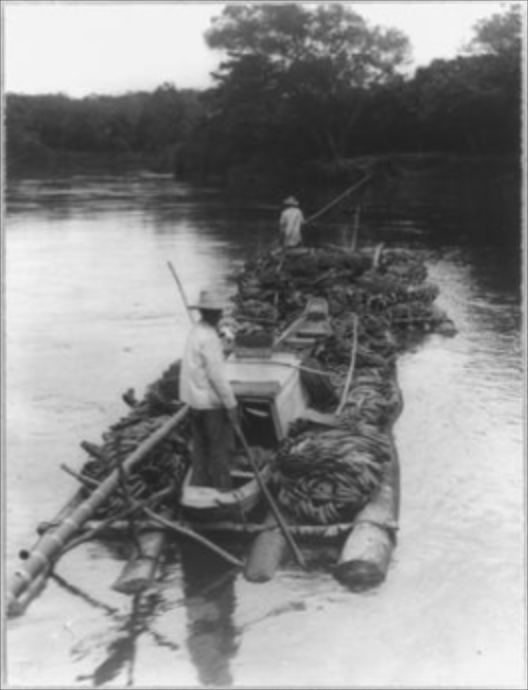
In 1910, Ecuador began harvesting and trading bananas, though their production did not become abundant until mid-twentieth century. Before 1920, cacao was the main economic industry but when it crashed, bananas took its place. The boom in cacao and banana production was likely due to the integration of the Ecuador into the global market which began in the mid 1800s. There was increased demand for “tropical” products such as bananas. Increased globalization lead to further modernization in Ecuador and other Latin American countries. These modern changes include construction of hospitals, schools, railroads and roads (De la Torre and Striffler 155)
The photographs show the shift in the economy as well as the impact globalization had on class divides. As Ecuador became more modern, it became a more Oligarchical society with the wealthy embracing the “progress” and “democracy” that modernity brought with it. The boom in the banana and cacao industries created a greater class divide, with the rich and the middle class getting richer while the working class was doing the hard work. In 1922, the workers conducted a strike in Guayaquil which brought the city and the businesses within them to a halt. This strike lead to a shift in power from the oligarchs to the rise of the ‘Popular’. (De la Torre and Striffler 155)
In the late 1800s, many countries in Latin America saw a shift from the liberal governments to dictatorships. People believed that authoritarianism provided stability to the nations and fostered a more successful economy. Paradoxically, many oligarchies and dictatorships were seen as “progressive” because of the economic growth (Chasteen, 208). This school of thought died out in the early 1900s when nationalism began to rise again and populist leaders came into power (Chasteen 233). The information regarding Ecuador’s economy, especially the increase in cacao and banana exports shown in the photograph and the shift in government from Liberal government to Oligarchy to Popular leaders shows that Ecuador followed the same patterns that most Latin American countries did in the neocolonial era.
Works Cited:
Carpenter, Frances, and Frank G. Carpenter. Banana’s Being Rafted Down A Tributary of the Guyas River. Photograph. World Digital Library. Ecuador: World Digital Library, February 12, 2016. Library of Congress. https://www.wdl.org/en/item/3312/#q=ecuador.
Chasteen, John Charles. Born in Blood and Fire. 4rd edition. New York: W.W. Norton, 2016.
De la Torre, Carlos and Steve Striffler. The Ecuador Reader. Durham, NC: Duke University Press, 2008.
